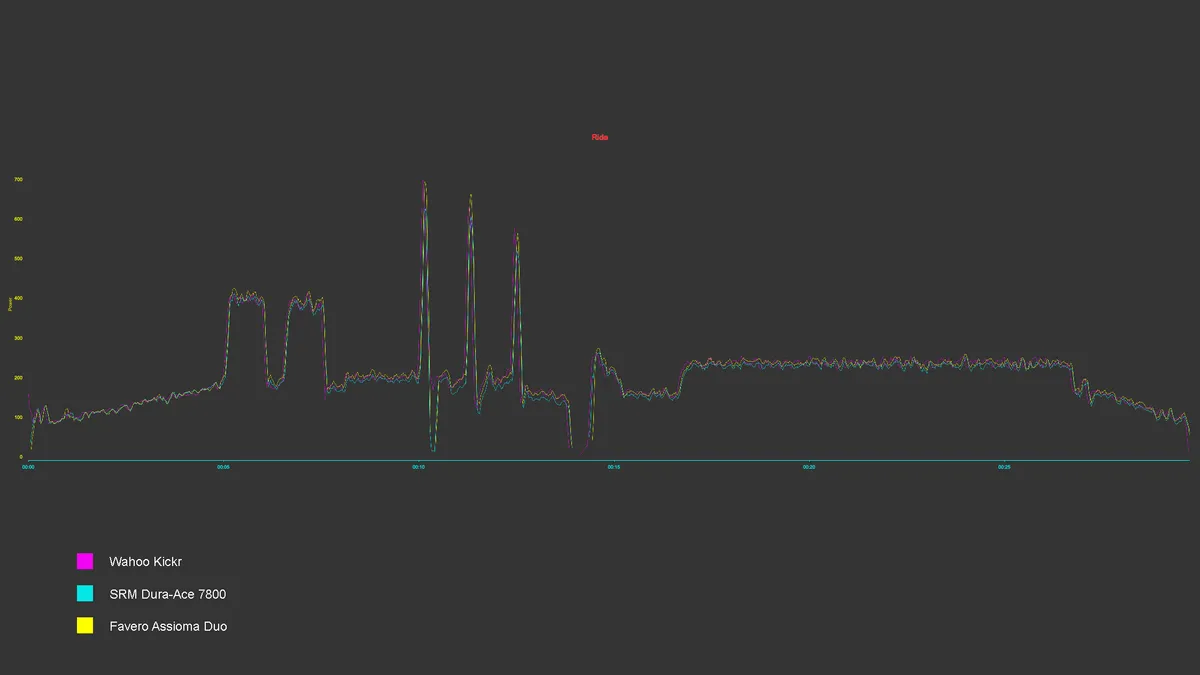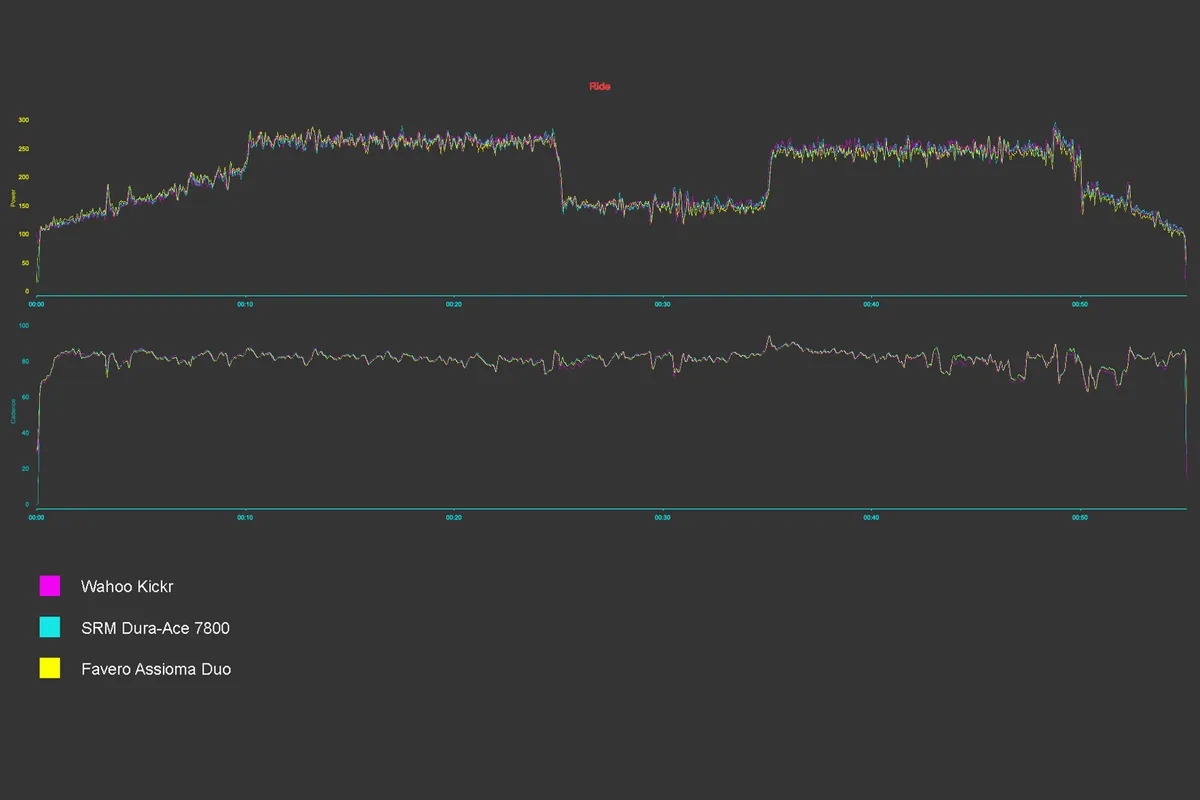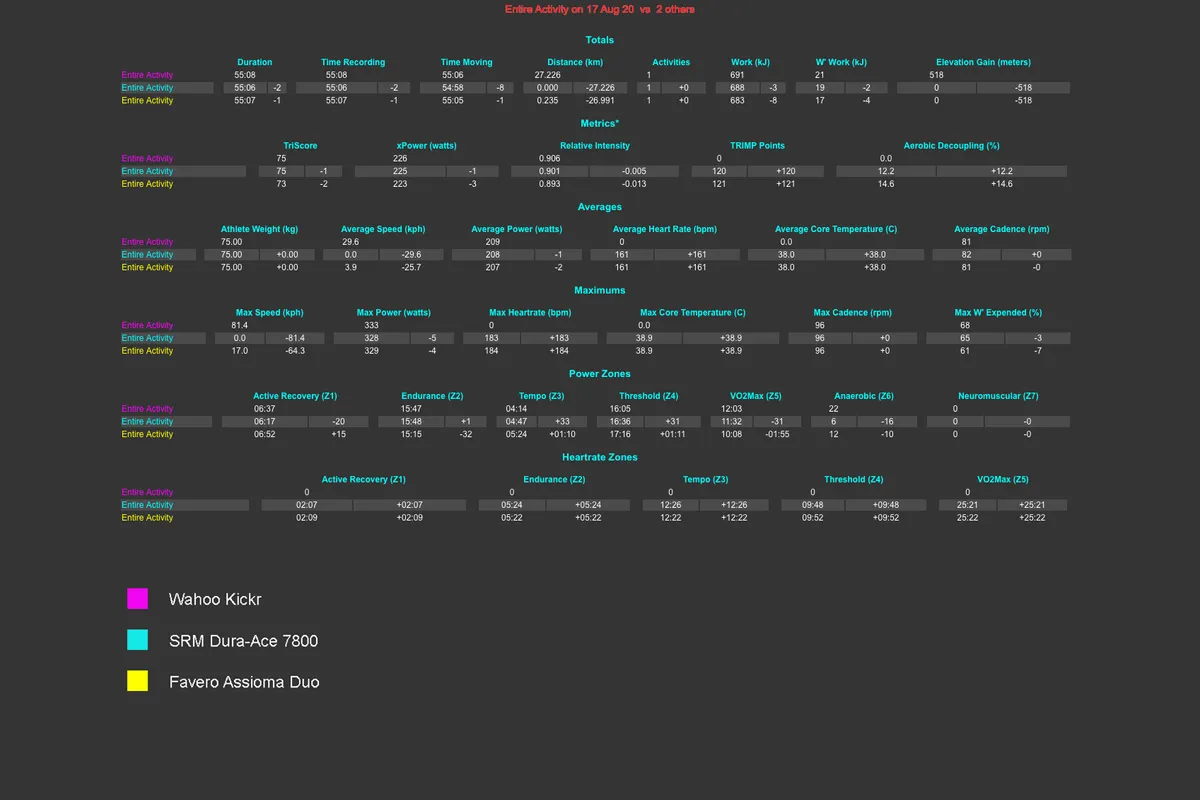The Favero Assioma Duo power meter pedals have been out for a few years now and although Favero isn’t a huge name in cycling, like Shimano or SRAM, it has earned an excellent reputation in a short amount of time.
The pedals themselves weigh 305g for the pair. That’s a little heavier than a standard Shimano 105 SPD-SL pedal (which doesn’t include a power meter), but it’s less than the Garmin Vector 3 or PowerTap P1 power meter pedals, which come in at 320g and 442g, respectively.
The power meter internals are all housed in the pods on the pedal spindle. This does mean the aesthetics of the pedals aren't as clean as the Garmin Vector 3 power meter pedals, where the internals are housed inside the pedal body, but it actually has some useful upsides (I’ll come to these later).
Unlike the Garmin Vector and the PowerTap power meter pedals, the Assioma’s also have internal rechargeable batteries.
The pedals cost £639 / €695 / $815. That’s very competitive for a true dual-sided power meter.
They also promise /- 1 per cent power accuracy, and 50 hours of use from an internal, rechargeable battery.
Power to the pedal
While the majority of cycling power meters measure force at the cranks, a pedal-based power meter arguably has a number of advantages over crank-based ones.
Since you actually apply power to the pedals and not the cranks, for example, a pedal-based system should theoretically be able to give you a more accurate measurement of your power output because it’s being measured as close to the source as possible.
They also don’t tie you to a set crank length, like a Stages or Shimano power meter does. If, for example, you want to use different sized cranks on your road bike and your time trial bike (shorter cranks have been gaining popularity in time trial and triathlon in recent years), a pedal-based system allows you to do so easily.
Finally, pedal-based power meters can also be simple to swap between bikes (ideally as simple as swapping any other pedal), and won’t require you to change a bottom bracket like you may need to with crank or spider-based power meters.
As a previously devout Shimano SPD-SL pedal system user though, the thought of changing pedal systems admittedly filled me with a little dread.
I can happily report that while the Assioma pedal body and Look-style cleats don’t quite live up to the lofty standards of SPD-SL, the switch has been worth it.
Favero Assioma Duo – What I like
To start with, installation is incredibly easy. You just need an 8mm Allen key, and they screw on like any other pedals (meaning the left pedal is reverse threaded). The manual indicates you should tighten them to a torque of around 35 to 40Nm.
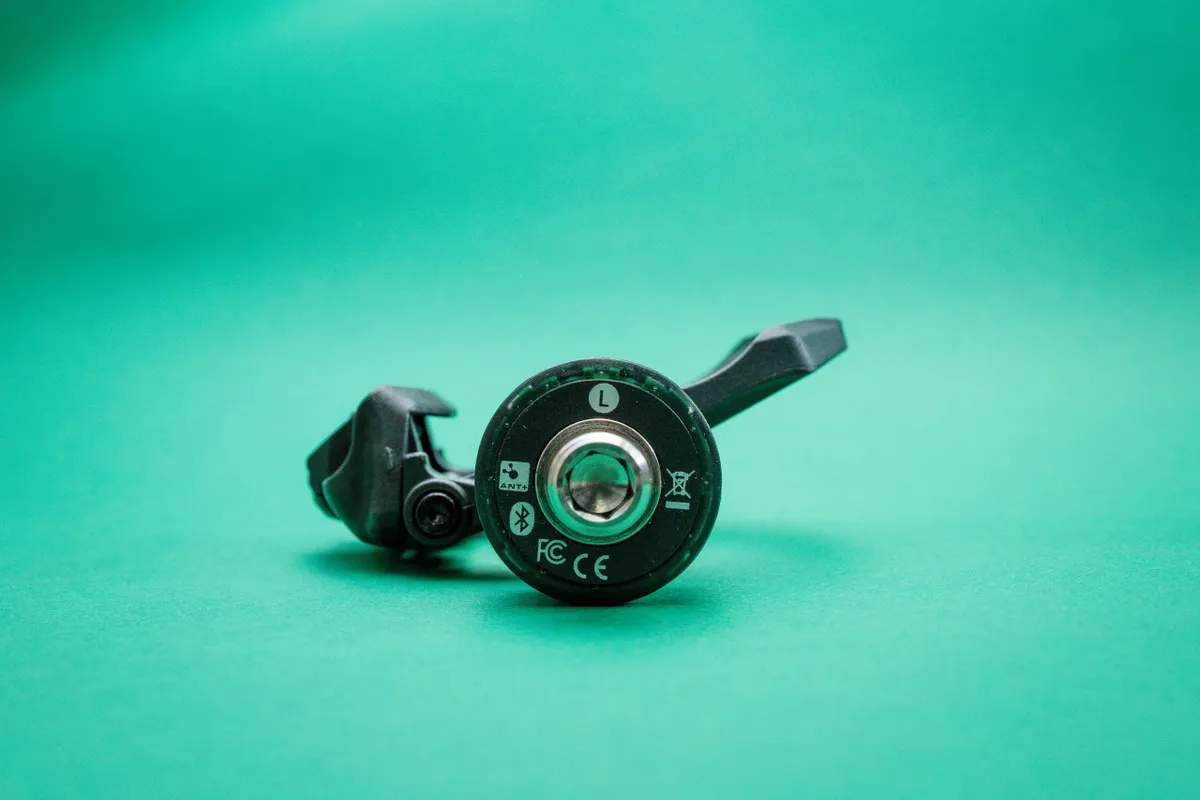
Favero also has a dedicated app for the Assioma Duo, available on iOS and Android, which is used to activate the two-year warranty, update firmware, check battery levels and access product support. It’s very easy to use – all power meters should have support apps like this.
As noted, the actual electronics are located in the pods on the end of the pedal spindle. These are a little unsightly, but they don’t have any negative effects while in use and, because no electronics are housed in the pedal bodies themselves, the important parts are protected from damage in the event of a crash.
Also, should you damage a pedal body, you can swap it out for a new one (they cost about £50 / €60) without any specialist tools.
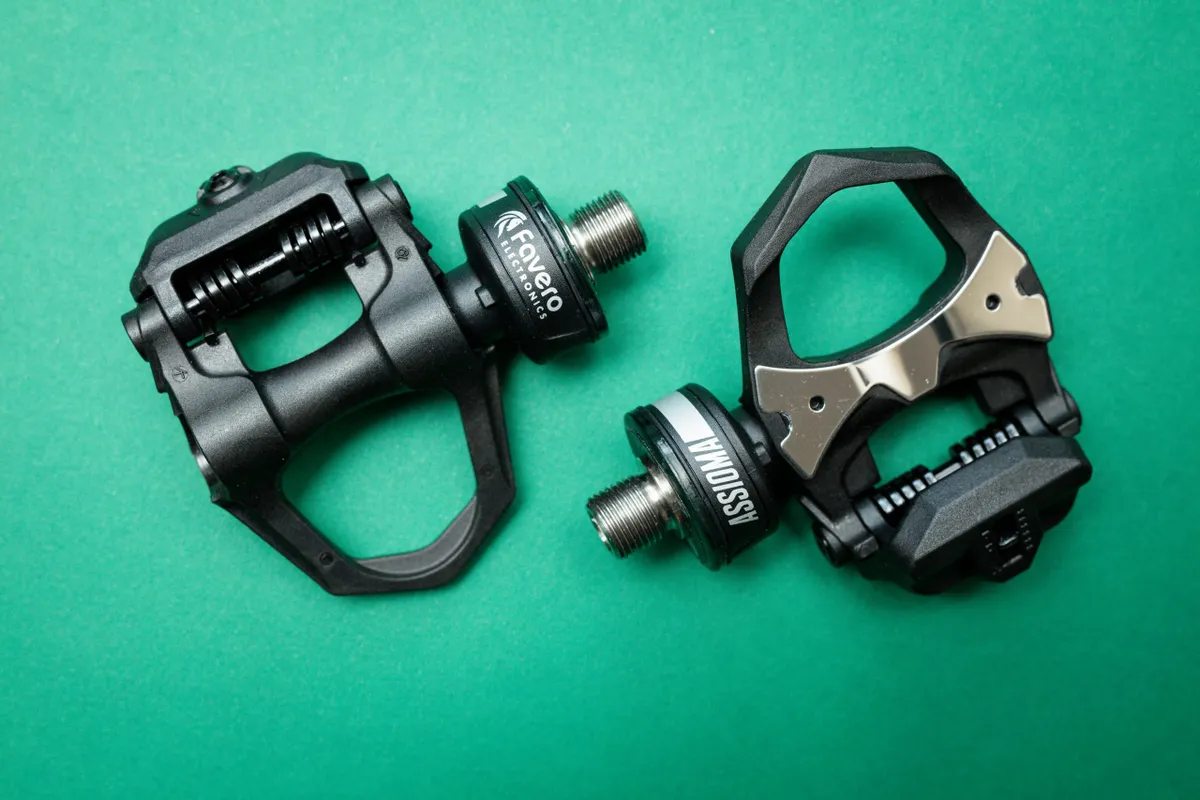
Theoretically, the pods could interfere with the soles of some cycling shoes that are very wide at the front. In that case, you might need to widen your stance width slightly or use a shim to increase your shoe’s stack height from the pedal.
Using my size EU45 Bont Zero cycling shoes (Bonts are generally wider at the front than most cycling shoes), with the cleats positioned to narrow my stance width as much as possible, I didn’t experience any interference, so I don’t believe this will be a concern for many.
The pedals charge via magnetic connecters, and Favero handily includes two, two-metre long USB leads and a dual plug, so you can charge both pedals simultaneously.
Battery life is also good. Favero quotes 50 hours per full charge, which seems about right from my testing.
Though that might not sound like much compared to power meters that use replaceable batteries (which usually eke out around 200 or so hours per battery), unless you’re a professional cyclist doing 30 hours a week on the bike, you likely won’t have to charge the Assiomas more than once a month.
And if you are someone who does ride a lot, you actually stand to save a fair bit of money by not having to keep shelling out for pricey replacement batteries.
Internal, rechargeable batteries also eliminate a potential weak point for moisture ingress, which can be a real killer for power meters and other electronics.
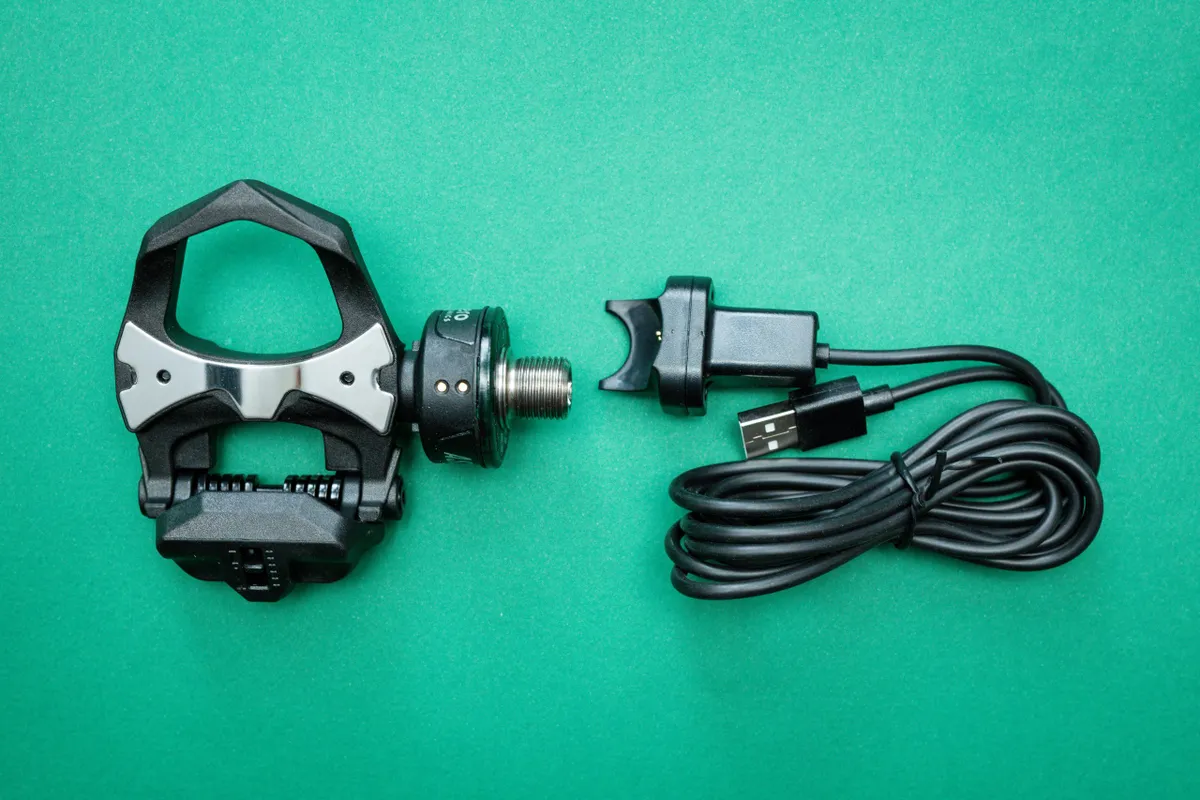
On that topic, the Assioma Duos have an IP67 waterproof rating and I experienced no issues with using them in the rain or aggressively washing them with a bucket and sponge.
The downside is that the batteries are not replaceable, and (like any rechargeable battery) ultimately have a finite life – when the batteries go, the power meter is kaput.
That sounds bad, but Favero says the batteries are likely to only lose around 20 per cent of their original capacity after 500 charge/discharge cycles.
To put that into context, that’s 25,000 hours of use, or over 13 years of training five hours a day, every single day. And even then, they’d still have a battery life of around 40 hours.
If you’re really concerned about long-term lifespan, some of these effects can be mitigated (to a certain extent) by following best practices for battery health. Things such as avoiding extreme temperature, not letting the batteries completely go flat, not leaving them to charge overnight, keeping the firmware update, etc. The kind of things you might do with a smartphone.
Favero Assioma Duo – What I liked less
It’s marginal, but the standard pedal body and cleats aren’t as good as Shimano's SPD-SL system.
It’s a small difference, but the Look-style cleats don’t quite have the same adjustability range as Shimano SPD-SL cleats. This won’t be a problem for anyone who already uses Look-style cleats, or for the vast majority of people whose cleat position simply falls within the available adjustment range (some cycling shoes even have adjustable bolt holes that would likely mitigate this issue entirely).
But, for those who run particularly extreme cleat positions, this could cause issues. With SPD-SL cleats, for example, I used to run them as rearwards as possible, but Look-style cleats simply won’t go as far back.
Furthermore, if you can’t replicate your current cleat position, this is likely to have minor knock-on effects for your saddle height and saddle-to -bar drop too, which you may also need to consider.
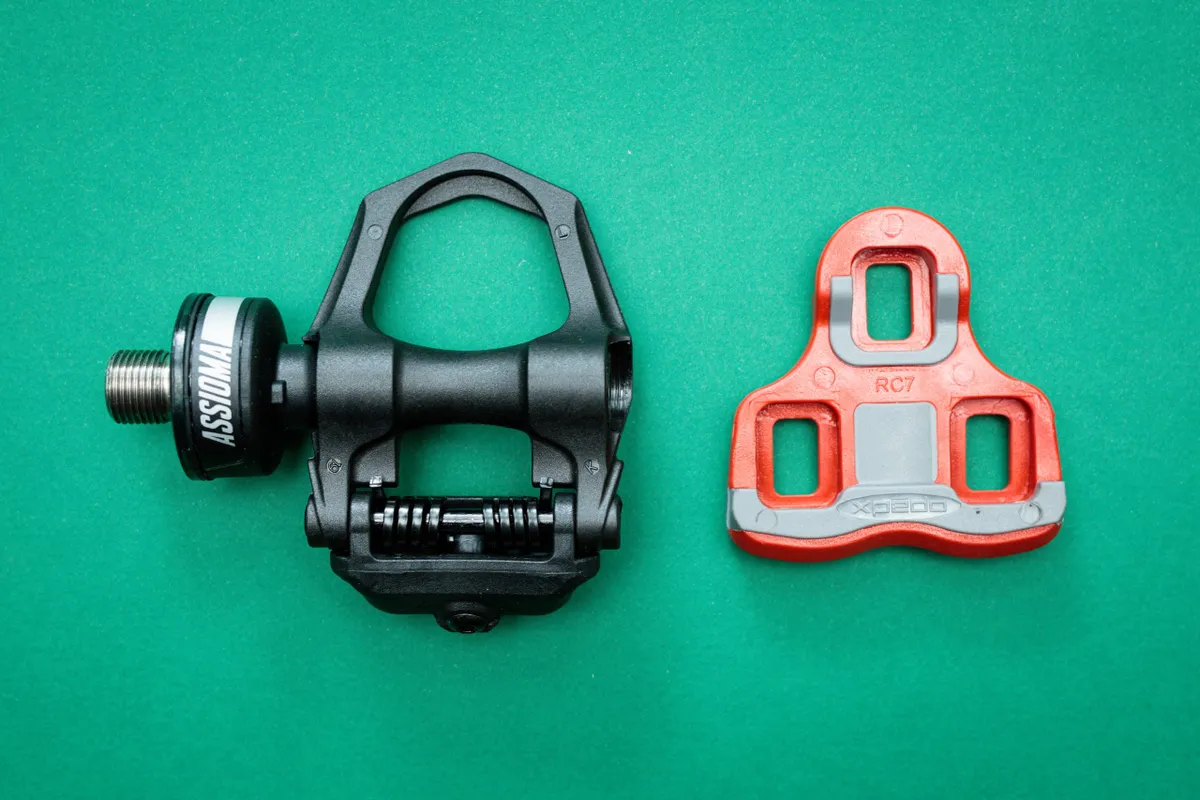
For those who aren’t fussy about positional setup, or fall within the available adjustment range, this won’t be an issue at all, though. The small changes were also something I was able to quickly adjust to.
However, for those who are particular about their position or have injuries that could be aggravated by adjustments like this, I’d recommend checking your position with a professional bike fitter after swapping to these pedals, or at least allowing for a period of adaptation before you take on any heavy training loads.
The included red cleats (which have six degrees of float – black cleats with 0 degrees of float are available separately) are also very slippery to walk on, particularly around the toe end. Genuine Look Keo Grip cleats are a little pricier, but are much better in this regard.

It's worth noting there is now a Shimano SPD-SL compatible version of the Assioma Duo, called the Assioma Duo-Shi.
This ships as a set of power meter pedal spindles only, and you have to supply your own SPD-SL compatible pedal bodies.
Due to the spindle pods and the wider pedal body Shimano SPD-SL cleats require, however, the Q-factor on the Assioma Duo-Shi has been increased to 65mm. That's 11mm wider than the Look Keo-compatible Assioma Duo, and 10mm wider than on the SPD-SL compatible Garmin Rally RS200 power meter pedal.
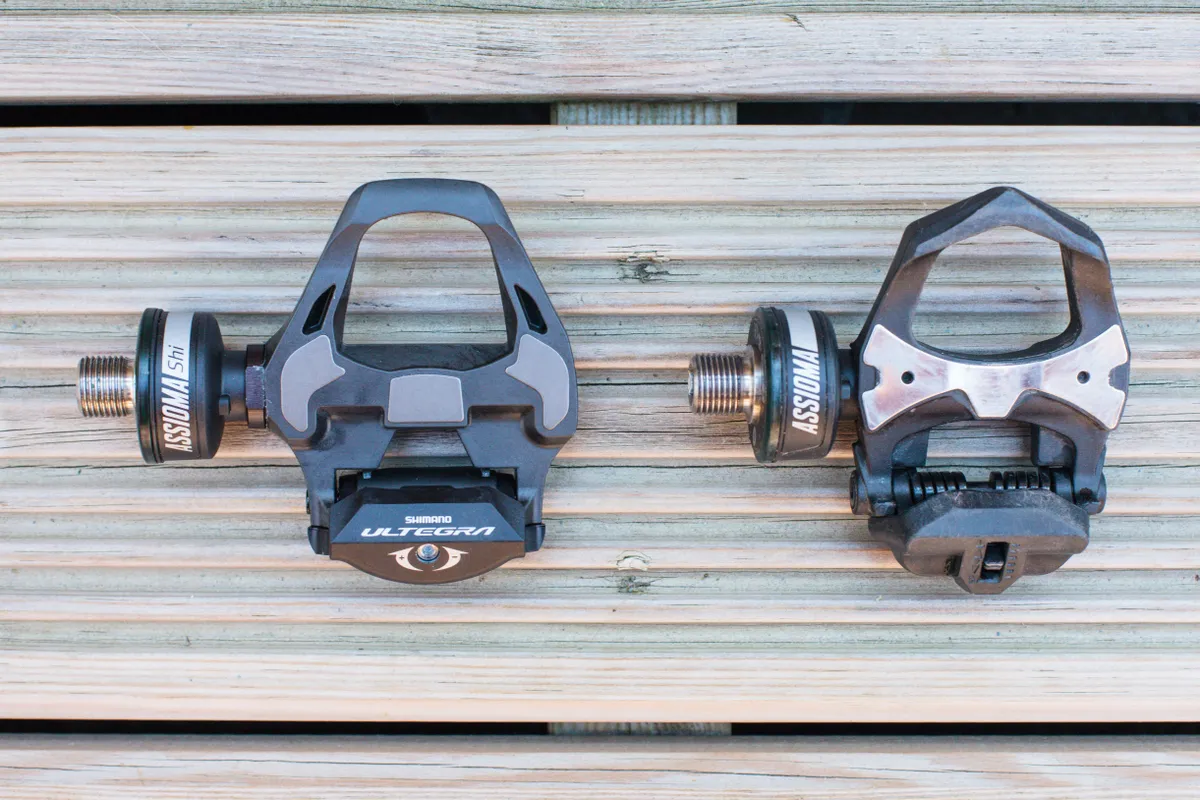
Lastly, the pedal bodies spin very freely on the spindle. This is good in one sense because it should mean low frictional losses, but it also means that when pushing off in a low gear, the pedal to which you’re not clipped into has a tendency to spin wildly for a couple of seconds before settling.
You can try to catch it with your foot, but it’s pot luck as to whether you catch it the right way up (like most other road specific pedals, these don’t offer dual-sided entry). This means it takes just a second or so longer to clip-in than with Shimano SPD-SL pedals I’ve used.
No big deal for most people, but if you race criteriums (or time trials and hill climbs in times of social distancing, when you won’t have a starter to hold you up on the line) then being able to clip-in quickly is absolutely vital because there’s always a fight for position in the opening laps.
As the pedal body can be disassembled for servicing, it may be possible to add a little grease to the bearings and slow them down, but I’ve not resorted to trying that yet.
Are the Favero Assioma Duos accurate?
Over the course of my testing I compared the pedals simultaneously against other benchmark power meters, including my SRM Dura-Ace 7800, a Verve Infocrank and the new Wahoo Kickr smart trainer, both outside in the real world and indoors on Zwift.
Favero claims the Assioma Duos are accurate to /- 1 per cent, and while I’m not in a position to verify that claim, I nevertheless found them to be both accurate and reliable over the course of months of testing and numerous rides.
What impressed me most was their ability to stay accurate and consistent even when regularly swapping them between bikes without using a torque wrench.
As Favero recommends, I made sure to zero offset (calibrate) the Assioma Duos after swapping them onto a different bike, but I never had any concerns about the data or any signal drops.
I’ve selected a small sample of rides to evidence my experience, but I could have chosen any rides I’ve done over the past few months because I can’t remember any instances where they’ve reported anything weird or unusual.
Should I buy the Assioma Uno instead?
In addition to the Assioma Duo, which comprises two separate power meter pedals (a left pedal and a right one), Favero sells an Assioma Uno – a single-sided left pedal power meter that ships with a standard right pedal.
At £449 / €445, it is a fair bit cheaper (around £250 / €250) than the Duo, and you can also buy a separate, right-side power meter pedal later to upgrade your Uno to a Duo, should you wish.
It sounds quite enticing, but I would strongly recommend buying the Duo over the Uno. £639 / €695 /$815 is a lot of money, but at the time of writing it’s actually one of the cheapest dual-sided power meters on the market.
The ability to use features such as Garmin Pedalling Dynamics is nice, but the jury’s still out on its usefulness for most people.
The bigger factor is that simply taking one half of your power output and doubling it (as the Assioma Uno and other single-sided power meters do) doesn’t account for what you are actually doing on the bike with enough precision – it’s only really an estimate.
This is because, unless your power output is a perfectly balanced, 50/50 split, between your two legs, all the time, across every terrain and at every level of fatigue, a left-sided power meter will simply not be accurate.
As a case in point, my left/right balance seems to hover around 48/52 per cent on average, but it can vary by much greater degree over the course of a ride.
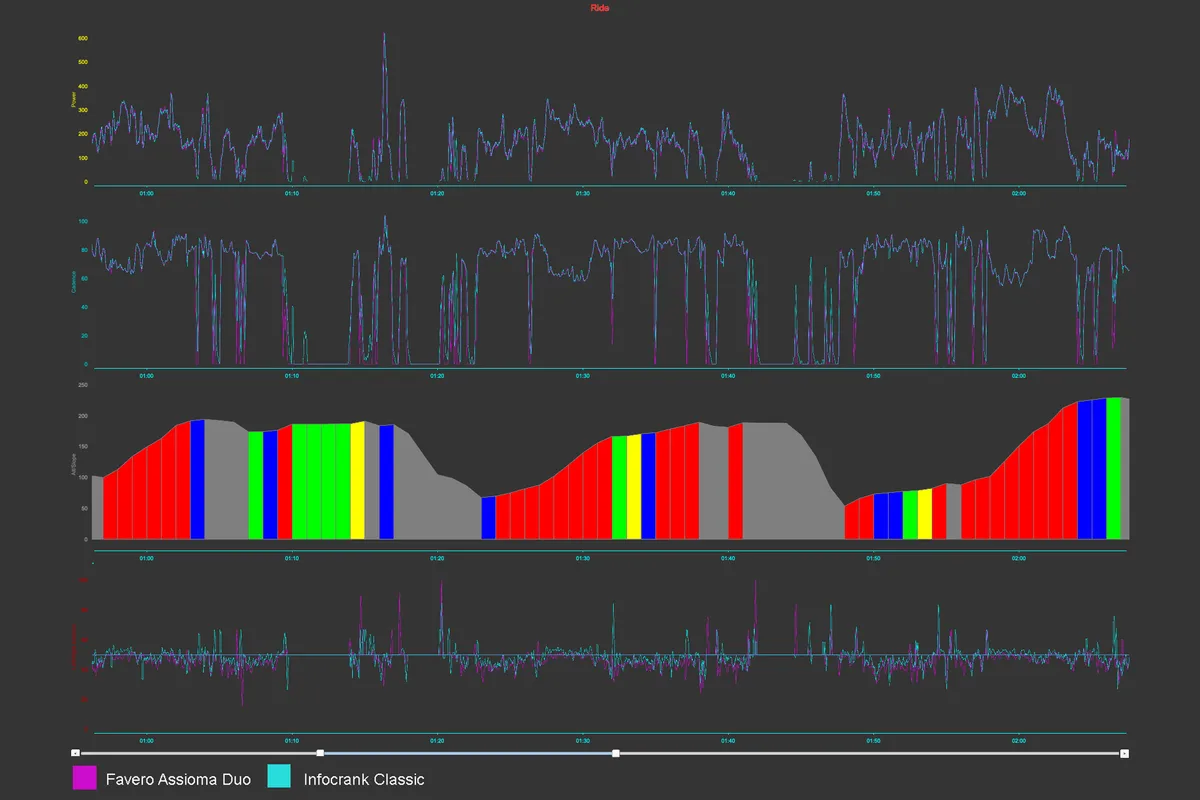
As I’ve discussed before, the ultimate goal for a power meter is precision.
If you don’t need such lofty levels of precision, it’s possible you don’t actually need a power meter. Afterall, training with a heart rate monitor is vastly cheaper and Strava even offers estimated power for free.
Favero Assioma Duo power meter pedals overall
In summary, there’s a lot to like here.
The pedal body and cleat aren’t the best on the market, but they’re functional enough and the small issues I discovered are likely to make very little difference to the majority of people.
It’s also worth remembering that there are compromises to be made with almost every power meter because there’s no one infinitely variable solution to fit all bikes and preferences.
My only reservation would be that if you have an extreme cleat position, or are particularly fussy about your bike fit parameters, it might be worth checking you can replicate your current setup with Look-style cleats (perhaps using a cheap pair of Look compatible pedals), or are happy to adjust your cleat position slightly, before investing in the Assiomas.
If you’re looking for a relatively cheap, accurate, reliable and fuss-free power meter, this is currently one of the best options on the market.
How we tested
I put seven of the latest power meters head-to-head to find out which is worth your hard-earned cash.
As well as testing the accuracy and reliability of the data on each unit, consideration was given to ease of installation, indoor versus outdoor use, firmware, power calculations, drivetrain compatibility, warranties, compatibility with external units such as bicycle computers, and any other additional features.
Each power meter was tested indoors on a smart trainer and outdoors in all weathers. To assess accuracy, captured power data was compared against data from trusted benchmark power meters recording simultaneously across multiple bicycle computers.
Also on test
Product
| Brand | Favero |
| Price | 695.00 EUR,639.00 GBP,815.00 USD |
| Weight | 305.0000, GRAM () - Per pair of pedals, excluding cleats |
Features
| br_cleatType | look |
| br_powerMeterType | pedal |
| br_connectivity | antPlus |
| br_connectivity | bluetooth |
| br_battery | Rechargeable |
| br_batteryLife | 50 hours |
| br_claimedAccuracy | +/- 1 per cent |
| br_waterResistance | IP67 |
